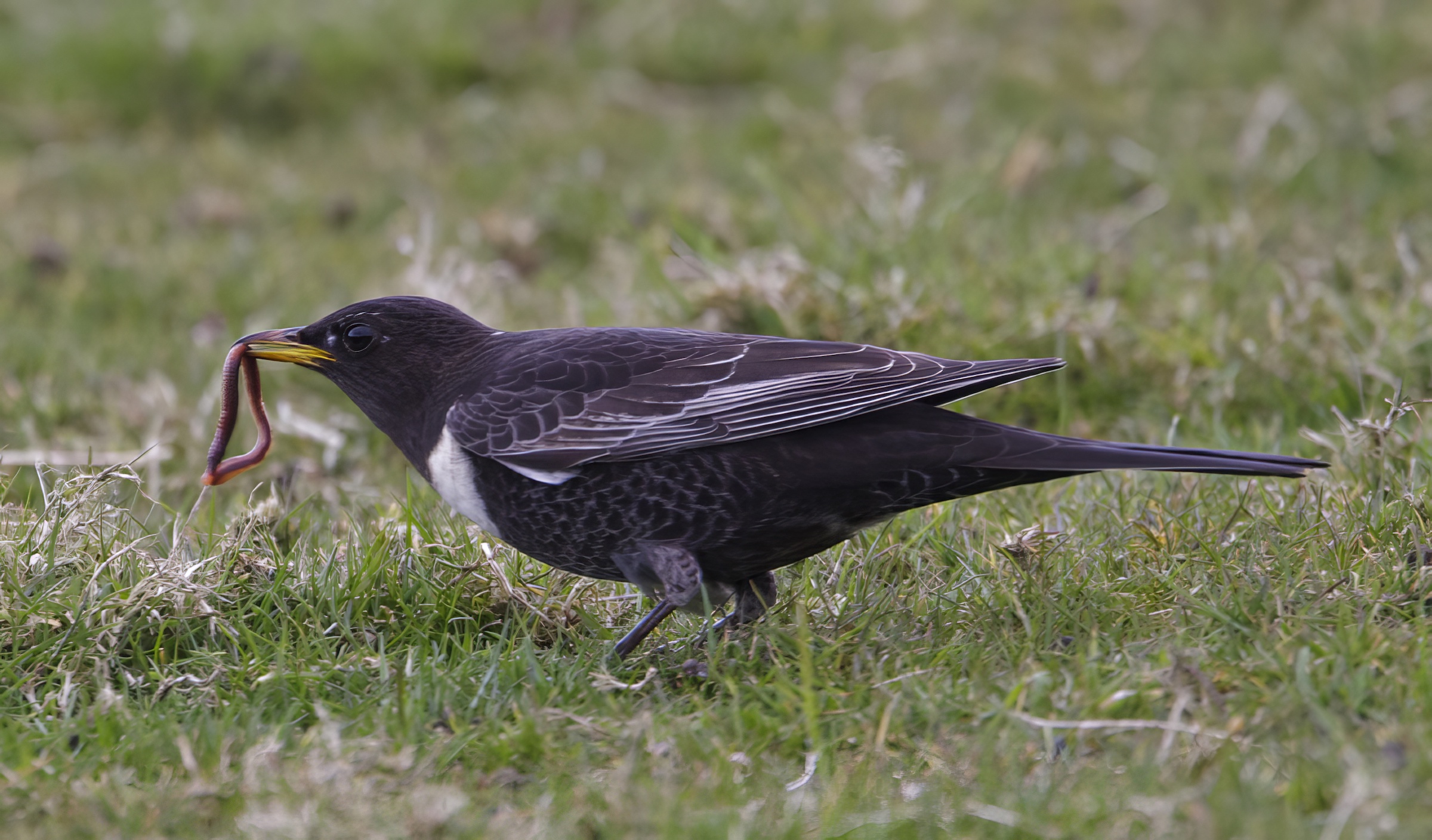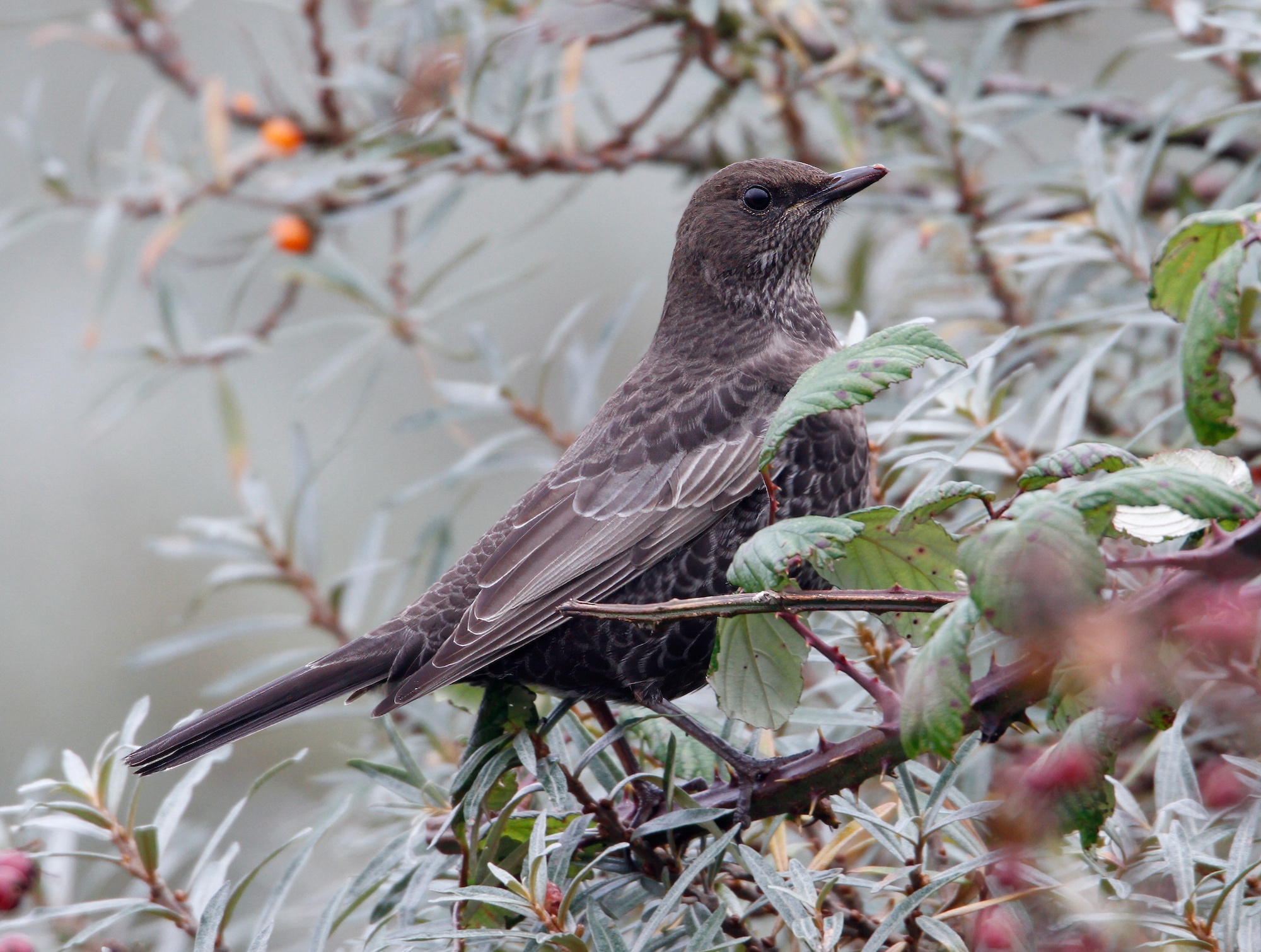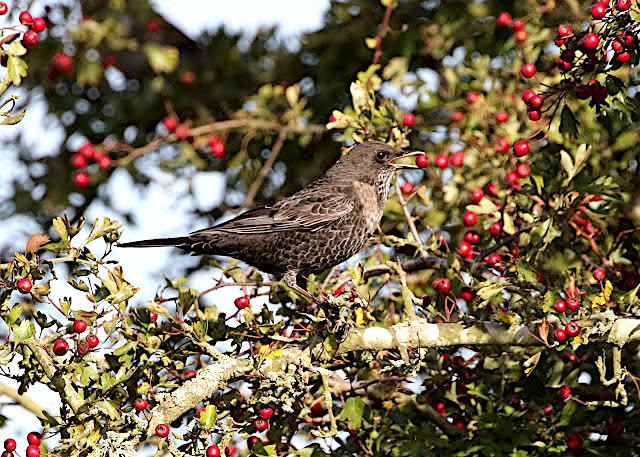Ring Ouzel Turdus torquatus
Scarce/fairly common passage migrant March-May and September-November; rare in winter.



Ring Ouzel is a bird that every inland patch birder has a chance of finding especially in spring when they can turn up anywhere on suitable pasture en route to their upland breeding grounds. The autumn migration tends to be more focused on coastal sites. There is no substantive evidence for them having bred in Lincolnshire despite their previously more widespread breeding distribution in the UK (Holloway 1996). One of the few summer records of the species was of a singing male at Donna Nook, July 13th, 1986.
During the five years to 2018 LBR reports showed that spring peak day counts at individual sites ranged from two in 2016 to 13 at Risby Warren on April 13th, 2015, with an average of 5-6 per year. Autumn passage was much stronger ranging from five in 2017 to 54 at Gibraltar Point on October 13th, 2014 with an average of 29 per year. In 2018 peak flock size was four in spring and 13 in autumn and a detailed analysis in LBR 2018 showed that there were over 215 birds in that year with 75% of them at Gibraltar Point. This suggests that in most years Ring Ouzel is probably a fairly common migrant. In January 2020 there was an exceptional record of a bird wintering in the Sea View/Rimac area of Saltfleetby-Theddlethorpe Dunes NNR probably of the alpine race T.t. alpestris which is the race found in the mountain ranges from northern Iberia eastwards towards the Balkans, Greece and Asia Minor.
Few Ring Ouzels are ringed in Lincolnshire, fewer than 10 in most years but with occasional better years such as 2012 (12) and 2013 (14). Those recoveries of Lincolnshire-ringed birds have come from France, as well as southern Spain and North Africa, which are their usual wintering areas.
Reference
Holloway, S. (1996). The Historical Atlas of Breeding Birds in Britain and Ireland: 1875-1900. T. & A.D. Poyser, London.
(Account as per new Birds of Lincolnshire (2021), included December 2022)
